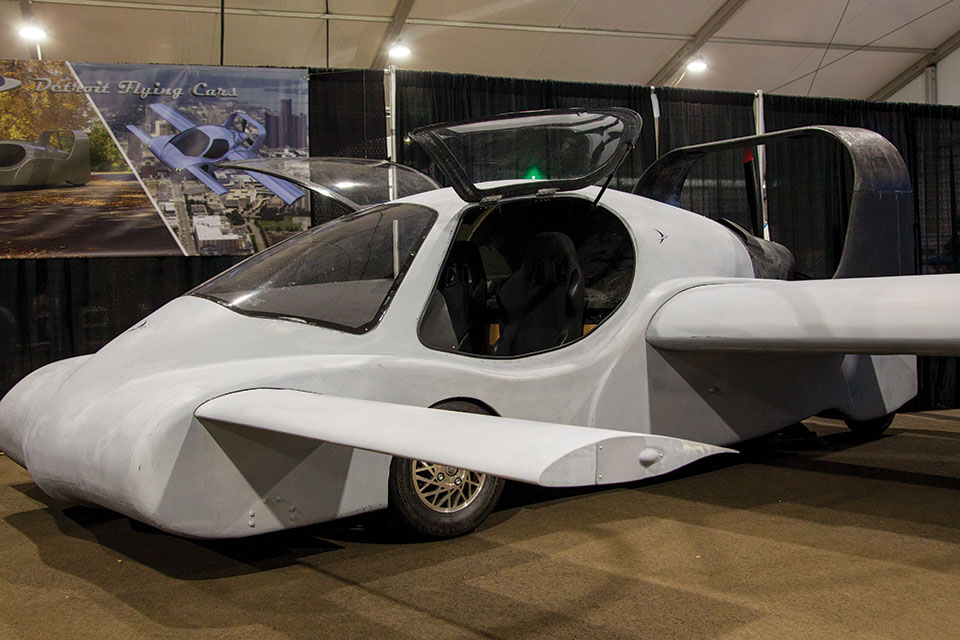New Concept Aims to Be a Good Car and a Good Airplane
By Randy Dufault
July 28, 2017 - Even as a child in India, Sanjay Dhall dreamed of flying cars.
“The crowds of people are so large that you are always bumping into others,” Sanjay, founder of Detroit Flying Cars, said while standing in front of his nearly complete prototype. “The idea of flying over it all has always been with me.”
His unique design retracts the main wings, and a front canard, completely into what looks remarkably like many other compact cars plying the highways and streets of the globe.
The core challenge for Sanjay was how to collapse the wing, which has the same area as a Cessna 150 wing, into a space only 6 feet wide.
“I wanted to build something where the flying surfaces are safely nestled away inside, rather than exposed to the outside environment,” he said. “That drove me towards the thinking about telescoping.”
As it goes with many new technology development efforts, Sanjay encountered a number of challenges. Resolving one often led to another, which led to another, and so on. From that chain of events, Sanjay developed what he calls “the science of compaction” to ultimately guide his final design.
“I love the idea of making things simple,” he said. “Simplicity is a driver, and compaction is the ultimate goal.
“One single [canard panel] occupies the entire width of the space inside. But, what do you do with the other side?”
The solution was to simply stack the two canard panels, one over the other. The prototype’s left canard is higher than the right.
“[It] completely breaks the rules of symmetry,” Sanjay said. “Aerodynamics doesn’t care; air doesn’t care.”
The back wing follows the same high-low, asymmetric design.
“This enables [me to use] a little bit of telescoping, rather than five or six pieces and lots of moving parts [to reduce the problem] …. And it very elegantly solves the whole problem of compaction.”
A key challenge came with the retracting wing’s spar. Spar structure inside the fuselage would prevent the outer wing panel from retracting into the inner panel. Sanjay solved the issue by rotating the rectangular spar 90 degrees before retracting the wing. During wing extension, the spar rotates into flight position, and locking mechanisms fix it all in place.
“When it happened, it was like an aha moment,” Sanjay said, when explaining how the rotating spar came to be. “It happened together with the offsetting of the wings. I think, collectively, this is what I call the elements of compaction that were necessary to achieve a product that people will believe is a car, and not an airplane that is too complex for everybody, but one where people can say ‘This is a car. I can drive this to the nearest grocery store.’”
Traditional reciprocating propulsion drives the craft’s pusher propeller. On-the-ground movement comes from electric motors.
“Tiny little electric motors, no gears, no transmission, the weight of all that is gone,” Sanjay explained. “I always reserve the right to go electric [for flight] one day, but I’m waiting for battery technology …. I’m sure it will get there, but until that point, I do not want to limit my freedom of being able to go 400 to 500 miles before stopping for gas, or recharge, or whatever.”
Sanjay hasn’t decided whether to offer the design as a kit or pursue a manufacturing option. Right now, he is concentrating on making his concept a reality.
“I don’t want compromises,” he said. “People have been telling me that if you combine an airplane and a car, you get a bad airplane and a bad car. I want to prove them wrong.”

